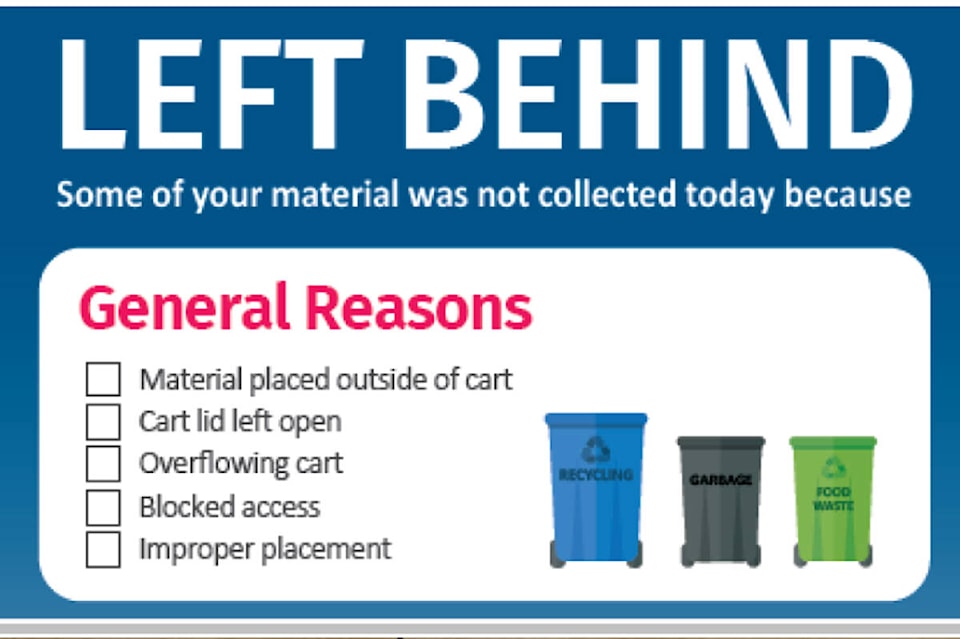Contaminants are regularly being found in Regional District of Nanaimo recycling bins, according to a waste audit program.
As part of the RDN’s commitment to a stewardship program for Recycle B.C., the non-profit responsible for residential packaging and paper recycling in the province, curbside recycling outreach was conducted from May to December, with recyclables, garbage and food waste bins inspected, according to a staff report.
Informational cart hanger pamphlets were distributed and conversations were held with residents with the intention of educating to increase recycling and reduce contamination, Sonam Bajwa, RDN solid waste services planner, told directors at a solid waste management select committee meeting on Jan. 18.
Commonly improperly placed items in the recycle bin included plastic film, Styrofoam and glass, while poly-lined products and some yard waste were incorrect items in the food waste bin, Bajwa said. Approximately 43 per cent of households audited had at least some contaminants in their recycling bins.
“Our last program audit, which was conducted by Recycle B.C., showed a spike in our contamination levels to about 8.7 per cent,” said Bajwa. “This was mostly attributed to an unexpected load of construction and demolition waste and a load of textile waste that ended up in the [area] that had the audit done on it.”
The increase in construction and textile waste was “a spike from [the] second quarter,” said Bajwa, and likely a situation where waste came from one load.
“It is one of the things we do keep an eye on and normally when we get a report card like this, our first step … is to get more information out to the residents,” she said. “Because it’s not seen consistently across the board, the fact that it was one or two loads that likely caused that, we don’t currently believe that there is a need to increase our current education.”
The outreach was conducted along RDN curbside collection route areas, the report said.
In all, recycling audits were conducted at 6,589 households, as well as more than 900 food waste audits, Bajwa said. Residents were informed of improper cart placement, item placement, and instances in which too much material was placed in the bins.
The team communicated with 540 people, with 456 interactions classified as positive, where residents were pleased with the feedback, stated the report. Six per cent responded negatively, while 10 per cent were neutral, the report said.
Garbage routes encompassed rural RDN areas, Gabriola Island, District of Lantzville, City of Parksville and Town of Qualicum Beach.
RELATED: RDN faces challenges for garbage bin replacement requests
reporter@nanaimobulletin.com
Like us on Facebook and follow Karl on Twitter and Instagram
